The color applied to a wooden surface interacts with both the wood and the subsequent finish coat. Trace interactions also occur between the primer and the wood substrate. The quality of staining depends on several factors which, if not respected, will result in staining defects, i.e. stains, discoloration, discolorations and color migration.
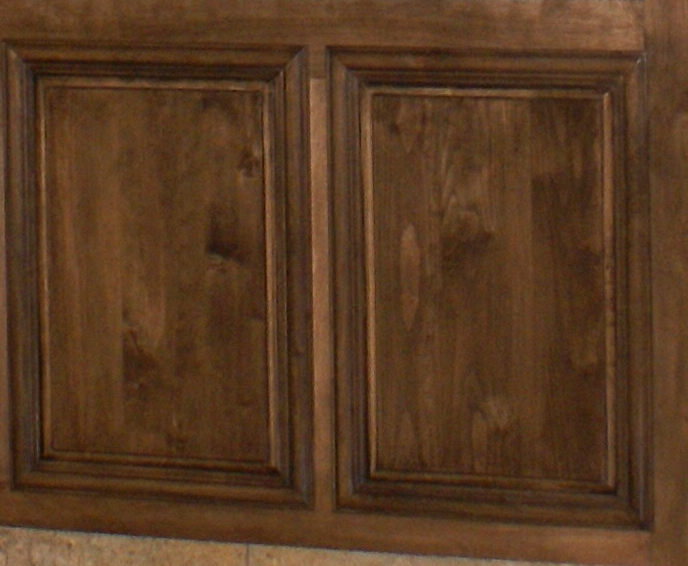
Stains due to different absorption
Stains most often occur due to improper sanding. In this case, in certain places, the absorption in the wood is increased or decreased, resulting in darker or lighter colored stains. Here's how to sand to avoid defects here.
But there are also situations where, no matter how well the wood has been sanded, stains still appear. This is the case with fast-growing species, where the wood is softer, looser and more absorbent and absorbs more color (poplar, willow, anise). In this case it is better to use uniforming staining solutions or special resin-containing stains that reduce absorption into the wood. Even staining can also be done after priming, but this method is not effective if the stains are very visible.
A special case of increased absorbency are the corners or stru stru strujite areas, where wood fiber ends appear to absorb more easily and quickly. The use of insulators that block absorption in the wood fiber is recommended.
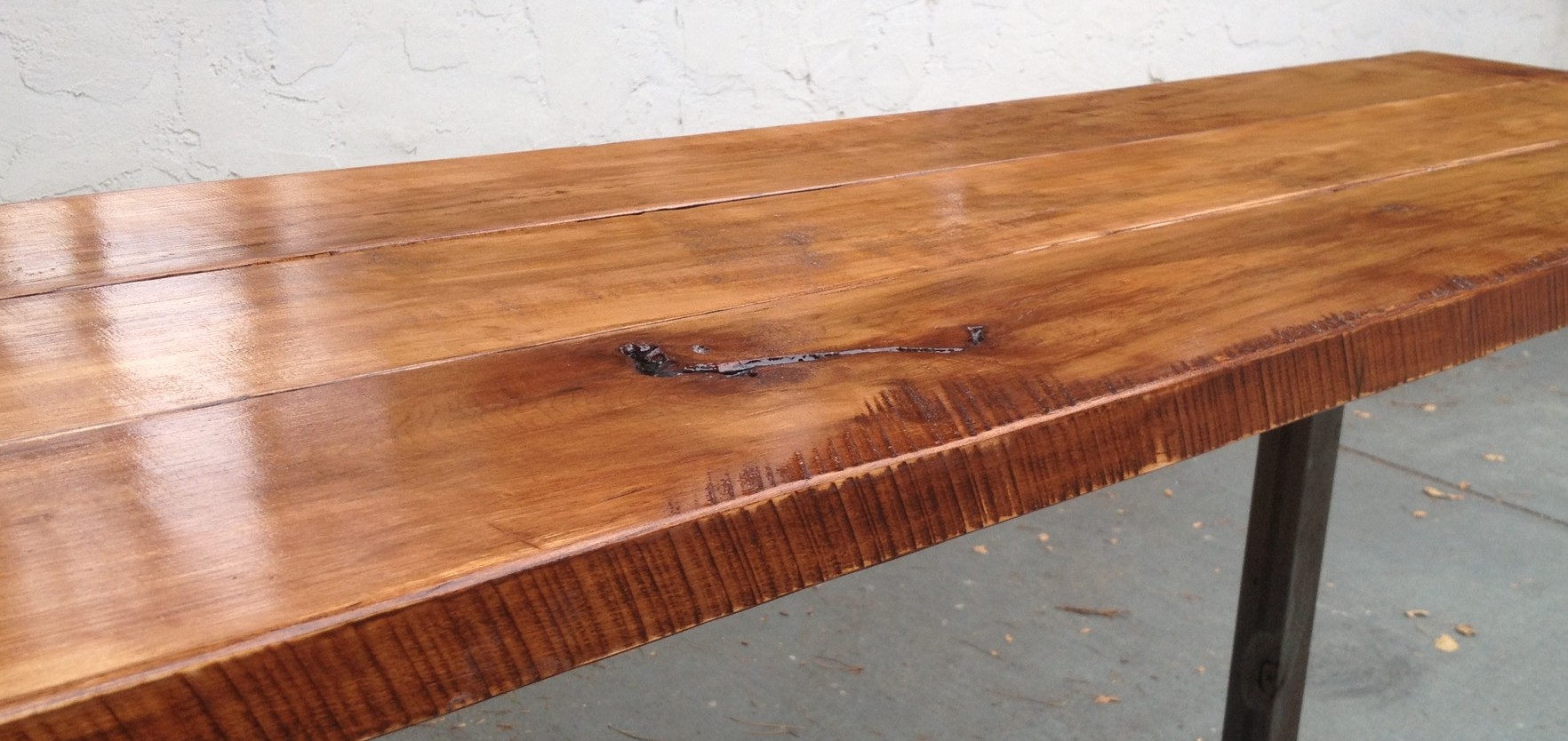
Putty or glue stains can alter absorption leading to staining
In the case of veneered panels, stains may occur in areas of glue penetration due to improper adhesive dosing or low-quality veneer with fiber pull-outs. In the area where the adhesive has penetrated, absorption is blocked and a light-colored stain appears.
The solution that was used a lot in the past was to color the adhesive. It was very restrictive, because afterwards you could only dye in the color put in the adhesive or in a very dark color. That's why it is recommended to use a coloring solution that has a rapidly volatile thinner such as acetone as a solvent and to apply it by spraying. This way, the color stays on the surface, does not penetrate into the wood, and also settles over the glue penetrated area. However, the penetration of glue should be avoided because, even if the problem of staining is solved, the problem of adhesion of subsequent coats to the substrate remains.
Stains also occur in areas where the wood has been repaired with putty, and the stain is not compatible with that putty. Compatibility between the two products should be tested before using them because, if they have been used, the only way to fix the defect is to sand everything down and start the process over.
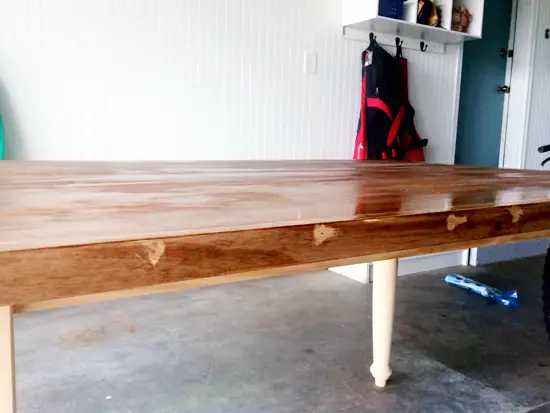
Chemically bleached wood changes the color of polyurethane primer
Primer coloring problems occur if a polyurethane primer is applied over chemically bleached wood. The catalyst is very sensitive to the substances with which the wood is bleached and turns the color of the primer to a deep yellow. If the wood has been discolored or chemically bleached, the finish should be done with acrylic hardeners. They also have the advantage that they do not change the base color at all and are recommended for protecting special effects, very light-colored finishes or light-colored natural woods.
Stains due to wood tannin
There may also be problems with coloring when waterborne finishes are applied to tanned woods such as oak, acacia or exotic woods. The phenomenon is even more visible if white or light-colored pigmented products are applied. For example, if a white waterborne primer is applied over acacia, almost immediately the white color will start to turn green. To avoid this, the use of insulators is recommended.
Wood tannins can also cause problems with bleaching coloring solutions. Here again, the solution is to use insulators before applying the stain.
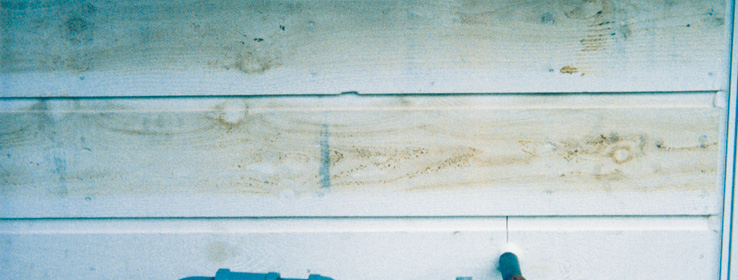
Colour change due to light
Discoloration can also occur due to exposure to UV radiation. This is the case with staining solutions used for staining outdoor products, those in display windows or in areas highly exposed to direct light, or those that will pass under UV lamps if such a finish is applied. In all these cases, UV and direct light resistant products should be used. Specially formulated exterior materials must be used. If interior-formulated dyes are used outdoors and the finished furniture sits in the sun, in less than a year that color, no matter what it is, will fade to gray.
For products used indoors but in brightly lit areas or in shop windows, use colorants that are resistant to direct light and coat with UV-absorbing materials.
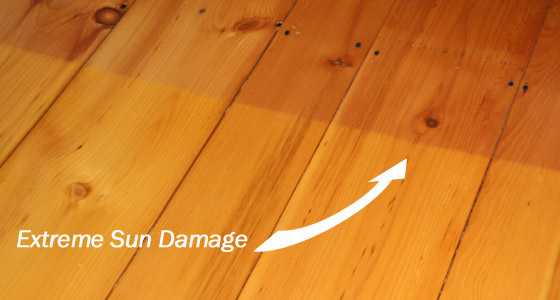
Colour migration
Sometimes, when you apply waterborne primer over a colored surface, you can see how the color starts to migrate in the primer. The phenomenon is also called bleeding. It usually happens with universal colorants, which are soluble in both water and organic solvents. When a water soluble primer is applied over it, the water it contains solubilizes the dye and the dye begins to migrate into the primer, staining it. The same can happen if a solvent-based primer, also solvent-based, containing a more volatile heavy diluent, is applied over the solvent-based stain. The solution is to use a paste that is insoluble in the product to be applied. More special gins may also be used which, once fixed to the wood fiber, do not dissolve in any thinner.
My recommendation is that you should always provide the supplier of finishing products with all the information about the nature of the substrate, the treatments it has undergone, the finishing technology used, the destination of the finished product and other such information that will help them to recommend the most suitable finishing products and solutions. This way you avoid defects that are difficult, if not impossible, to remove at no extra cost.
The full series of finishing defects can be found here here.
I hope you find the above information useful. As always, additions are welcome. And if you have any questions or queries, please leave them below in the space provided. I will be sure to reply.





























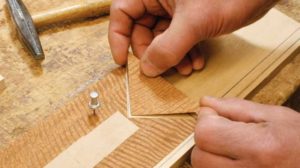






[...] Finishing defects - Staining, staining, fading, colour migration [...]
[...] now, about staining, I have told you how to avoid the appearance of finishing defects. As it happens, I first told you what not to do. ☺ Now I'll tell you about [...]
Hello,
Very interesting article, thank you. On the subject, I would find it helpful to have a point of view, I purchased a mango wood chest of drawers and on certain portions you can distinguish stains that slightly lead to green. Could the wood have been treated with white water based primer? It has some kind of flour on it and smells pungent, it comes from India.
I'm going to apply a coat of wax but not before finishing the surfaces a bit with glaspapir, I'd be glad if it would darken a bit; at the moment it's a pretty light colour somewhere in the greyish-white range. Is this a good approach to even out the color and cover those spots? Thank you,
Hello,
Exotic wood has many different tannins. I can't figure out what it could be.The smell could be specific to the wood and then it will linger longer, or to the finish and normally it will fade faster.
You can use coloured wax to darken the colour of the furniture. Wax can also be applied without sanding, but to make sure you remove any accumulated dirt you can sand beforehand. Use fine sandpaper (280 or 320 grit) or fine abrasive sponges.
Good luck!
Thank you very much for your answer. Good ones,
Wow, a lot of useful information. Thanks so much for the site, you do a great job! 🙂
I also have a few questions, for starters, can you recommend a good varnish, how to apply it for some recently painted doors?
The paint is white, alkyd, I have given several coats and I would like to protect them from yellowing and be more resistant over time. How many coats of varnish should I apply? I was thinking of a matt or semi-matt varnish but I don't know if that's a good idea. I should mention that they have not been sanded before due to lack of time, nor prepared in any way, I just gave the paint.
Can you recommend some articles for what I could do now to protect them? Thank you very much, I am waiting for a reply.
Alexandra
Hello!
Thank you for your appreciation!
The varnish you apply, whatever its nature, will slightly yellow the surface. This will happen even when applying the varnish because the resins in the varnish have a yellowish tint, darker or lighter, depending on the nature of the varnish. If you want that pristine white, you will lose it if you varnish. Paints have pigments that give the white, in varnish it's just the resins, they give the yellow tint.
Alkyd paints are resistant to light, which changes colour. Unfortunately, the least resistant is white paint. For good resistance it should contain a large amount of titanium dioxide, which is expensive.
If you still want to varnish, you will have to use an alkyd varnish or a water-based varnish (you have to test it first on a more hidden part). Solvent-based varnishes, which are not alkyd, are not compatible and will not form a continuous film (they separate, they repel). The best lightfastness is with undercoats. They have UV absorption and small amounts of pigments, which is why they are not totally colourless). Use a matt, or semi-matt varnish, and you will see less of the flaws, scratches or hand marks. Varnish protection is also good for scratches. On varnish they are not visible, unlike on paint.
I'll leave some links below. I don't know how much I can help you in this particular case. But there are many, I think, useful articles in the Finishing and DIY sections of the site. You can also find information on the youTube channel Revista din Lemn.
All the best!
https://revistadinlemn.ro/2020/04/23/vopsirea-si-lacuirea-sfaturi-pentru-incepatori/
https://revistadinlemn.ro/2017/08/16/sfaturi-pentru-finisarea-usilor/
https://revistadinlemn.ro/2020/03/25/7-defecte-de-lacuire-sau-vopsire/
https://revistadinlemn.ro/2019/05/16/5-sfaturi-de-finisare-pentru-a-evita-obtinerea-suprafetelor-aspre-si-rugoase/
https://revistadinlemn.ro/2017/02/13/combinarea-corecta-a-materialelor-de-finisare/